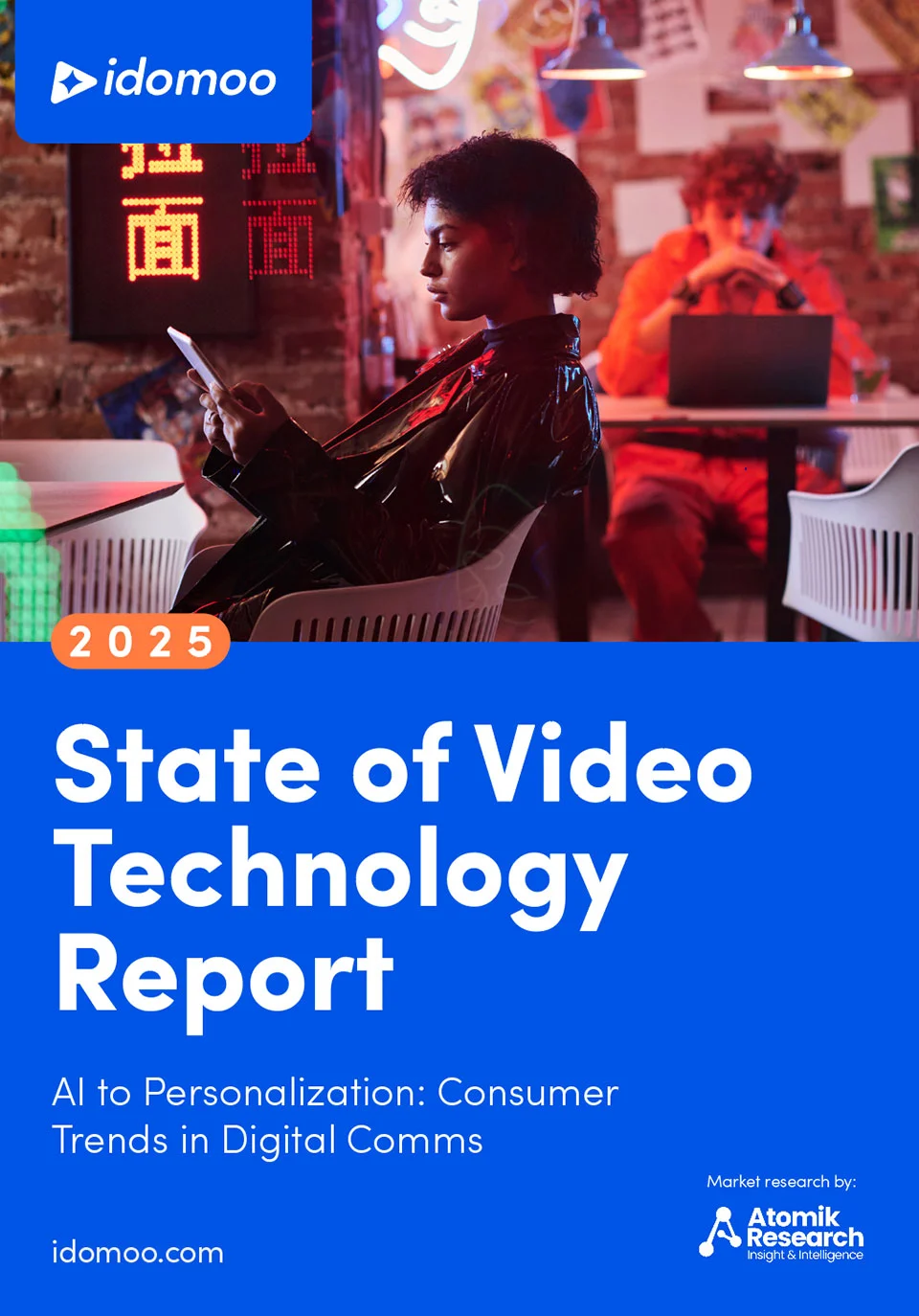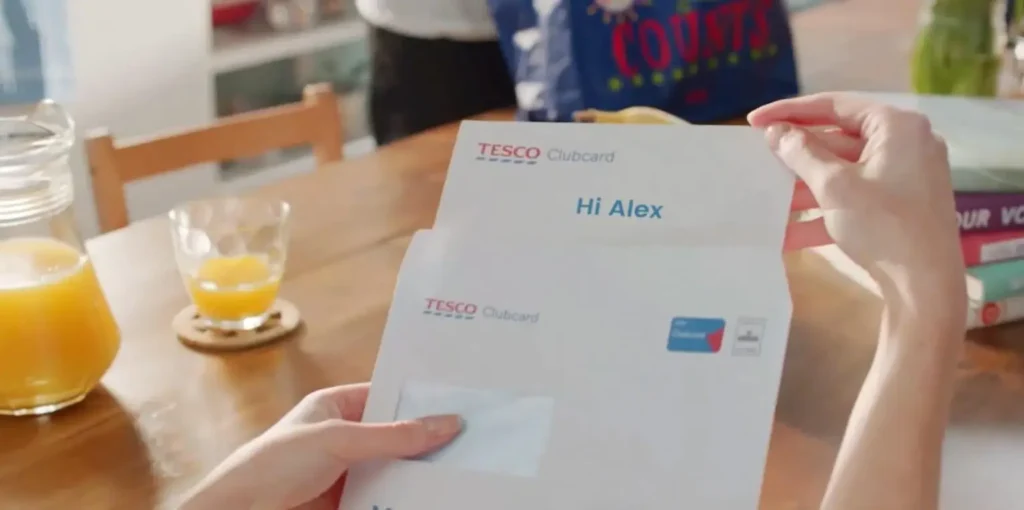You’ll be surprised at just how keen people are to watch video, and how effective video can be on engagement, purchase decisions and your bottom line. As these video marketing stats show, it’s not just a content medium — it’s a tool brands can use to connect emotionally, build trust and inspire action. It’s no wonder that video is becoming an essential part of digital marketing strategies across industries.
Think about this: 90% of the information transmitted to the brain is visual, and 90% of all purchase decisions are made subconsciously. If you incorporate captivating visuals into your marketing efforts, you’re likely going to see a lot of success.
Post on
When it comes to retention, people ultimately choose to engage with and stay loyal to a brand’s identity — the specific story beyond the products and services. It’s up to marketing teams to clearly convey what values a brand stands for, how it can enhance consumers’ lives and even how it can contribute to their own personal identity.
Whether it’s through interactive tutorials, personalized recaps or behind-the-scenes clips, video can add a human touch and make your business more relatable. Plus, the rise of social media platforms has made it easier than ever to share video content, amplifying its reach and impact.
Curious to learn more? Let’s check out 47 impressive facts about video engagement that reveal the power of video and why it’s a game-changer for your marketing efforts.
Here’s How Consumers Feel About Video
Video content has undeniably become an essential part of the online experience. But beyond the sheer volume of videos being watched, there’s a deeper layer to how consumers feel about video, especially when it’s used by brands.
Consumers are far from passive viewers. They have strong opinions and preferences when it comes to video content. Understanding these sentiments can help brands tailor their video strategies to better meet consumer demands and build stronger connections.
Check out these interesting statistics that shed light on consumer attitudes towards video:
- In the U.S., the average person spends around 3 hours and 38 minutes watching digital videos each day.
- Users start to ditch slow-loading videos after 2 seconds, with 40% of viewers abandoning it by the 10-second mark.
- 87% of consumers say video quality impacts their trust in a brand.
- For consumers, video is the No. 1 most memorable type of content from brands.
- 82% of consumers who receive video content from brands say they like that content, with the percentage even higher for Gen Z (85%) and high earners (87%).
- 81% of people are interested in receiving Interactive Video content from brands. This number jumps up to a whopping 94% for Gen Z consumers, 90% for millennials and 87% for high earners.
- 44% of people prefer to learn about a product or service by watching a short video. This far surpasses the preference for ebooks or manuals (16%), infographics (15%), text-based articles (13%), sales calls (6%) or webinars/presentations/pitches (5%).
- Consumers are nearly 3x more likely to see a brand as innovative when it uses advanced video tech.
- 83% of people want more video content from brands — but only 19% say they frequently receive it.
- The ideal video length for video ads is 15-30 seconds.
The numbers don’t lie. Consumers clearly have a huge appetite for more video content. But despite the high demand, there seems to be a gap between what people want and what they get. This presents a massive opportunity for brands to stand out by simply providing more of what their audience craves.
Create Your Own Personalized Video
See the magic in action — instantly
Why Video?
So we’ve established just how much people love and want video — but what’s the science behind its appeal? Consider these stats:
- Our brains are incredibly quick at processing visual information, analyzing it in as little as 13 milliseconds, or more than 7x faster than the average blink of an eye.
- Approximately 65% of the general population are visual learners. This means they absorb and retain information better through visual cues rather than textual or auditory methods.
- Studies also show that visual retention can be as high as 80% after 32 seconds, compared to just about 60% for auditory information.
- Forrester estimates a minute of video is worth 1.8 million words.
Of course, visuals are just one aspect of video. The beauty of the format is that it’s a seamless combination of images, animations, text and audio — which is exactly what makes it so memorable and engaging.
According to National Geographic, engaging multiple senses — as interactive graphics and videos do — enhances learning and memory retention and can even “increase attention span.”
Beyond these facts, video also excels at creating deeper connections with viewers. Stories told through video tap into emotional responses, creating bonds with viewers that drive customer engagement and customer loyalty. Whether it’s showcasing a product’s benefits or conveying brand values, videos are great at making messages memorable and relatable.
Here’s What Marketers Have To Say About Video
Alright, we’ve covered how much consumers love video and why it’s so effective. But what about brands? How are they leveraging video and what results are they seeing? Let’s dive into some interesting video marketing statistics straight from the marketers themselves:
- 91% of businesses use video as a marketing tool in 2024 — an all-time high since this stat was reported in 2016.
- 90% of video marketers say video has helped them increase brand awareness.
- When it comes to the ideal video length, 30-60 seconds is reportedly the most effective according to 39% of marketers, followed by 1-2 minutes (28%).
- Half (49%) of marketers say interviews with influencers/subject matter experts produced the best video results, but how-to videos (48%), case studies/customer stories (48%) and branded stories (47%) are close behind.
- 81% of video marketers have a dedicated budget for video marketing, ranging from over $100K per quarter for 20% of companies to under $20K per quarter for about 25% of companies. 42% of companies spend between $20K and $100K per quarter on video marketing.
All in all, these insights show how video has become a powerful and essential tool in the modern marketer’s arsenal.
With the majority of businesses using video and dedicating significant budgets to it, it’s clear that video marketing is not just a passing trend. Meanwhile, the insights into preferred video lengths and formats helpfully reveal what works best when it comes capturing audience attention and delivering impactful messages.
But by now you must be wondering — what kind of measurable results can you really achieve with video? Let’s take a look.
Video Engagement and Your Bottom Line
Now that we’ve heard from the content marketing pros about the power of video, let’s talk about what it means for your bottom line. We all know that at the end of the day, the numbers matter. So how exactly does video impact those all-important metrics? Check it out:
- 82% of consumers have been convinced to buy a product or service after watching a video.
- 77% of people have bought or downloaded an app after watching a video about it.
- Consumers are over 2x more likely to buy from a brand that uses advanced video tech.
- When video is present on a landing page, conversion has been found to increase by 80% to 300%.
- 87% of video marketers say video has helped them generate leads.
- 87% of video marketers say video has directly increased sales.
- 90% of marketers say video marketing has given them a good ROI.
Considering how diverse the use cases of video is, it makes sense that it often delivers a good return. Videos can showcase your product in action, tell your brand’s story and build a connection with your audience in ways that text and images alone just can’t match.
And it’s not just about convincing people to buy once. Advanced video technology can create personalized experiences that boost customer satisfaction and loyalty. In short, if you’re looking to boost your bottom line, video is the way to go. It’s effective, engaging and delivers results that can transform your business.
How Video Transforms Your Website
Video can also specifically improve the effectiveness of your website, fundamentally changing the way visitors interact with your site and how they convert into customers. Here are some video statistics that might surprise you:
- 67% of businesses say that their own website is the best place to distribute videos.
- People stay 2 minutes longer on a site that features video.
- The chances of getting a page one listing on Google increase 53x when video is present.
- 86% of video marketers say video has helped them increase web traffic.
- 82% of video marketers say video has helped keep visitors on their website longer.
- Sharing videos on a blog or website has the second highest ROI and is the 2nd most effective at generating leads, behind only social media.
Pretty impressive, right? But what does all this mean for you? If you’re not already using video on your website, now’s the time to start. Adding video can make your content more dynamic and visually appealing, helping to convey complex information quickly and effectively.

Market Study
State of Video Technology Report
Plus, videos can ignite a stronger emotional connection with your visitors, which encourages them to spend more time on your site and increases conversion rates. In short, it’s a simple yet powerful way to enhance your site’s performance and keep your audience engaged.
Why Video Reigns Supreme on Social Media
Whether you’re scrolling through Instagram Stories or catching a live stream on Facebook, videos are everywhere on social media. Fast-paced, engaging, and typically more entertaining than scrolling through text-heavy posts, video has become the go-to medium for social. Here are some numbers that highlight its impact:
- Video is consumers’ No. 1 favorite type of content from brands on social media.
- 76% of video marketers use social media to share their videos, with the channel achieving the highest ROI of any other video marketing channel. It’s also the most effective channel to generate leads.
- LinkedIn tops the list as the favorite social channel for sharing videos, chosen by 43% of businesses. YouTube is close behind, with 40% of companies posting their video content there.
- Tweets with video had 10x more engagement than without video.
LinkedIn says that a video under 30 seconds has a 200% lift in completion rates. - 74% of consumers say they engage with ads on Instagram Stories.
- Live video dominates on Facebook, seeing 3x more post interactions than the next post type (Carousel).
These numbers tell us a lot. Not only are social media videos preferred, but they’re also driving significantly higher engagement and returns on investment for marketers. Whether it’s behind-the-scenes clips, product demos or engaging live sessions, videos can help you connect with your audience in a more authentic and impactful way.
Not to mention, with platforms constantly evolving and introducing new features for video content (think: YouTube Shorts or Instagram Reels), video is getting more exposure than ever. If you’re looking to boost your social media presence, investing in video is undoubtedly a must-do.
How Different Types of Videos Drive Engagement
So we’ve talked about how social platforms love video, but let’s zoom out a bit. Social media is just the tip of the iceberg. Video has so many use cases across different platforms and purposes, each with its unique impact.
Whether it’s building trust, onboarding customers or driving sales, different video formats have distinct advantages. Let’s take a look at what the numbers tell us about different types of videos and their effectiveness:
- The most popular type of video content is testimonials, with 39% of video marketers saying they have created them in 2024. At 38%, explainer videos are close behind.
- 91% of people have watched an explainer video to learn more about a product or service.
- Interactive Video has been found to increase click-through rates by 4x.
- 88% of businesses say explainer videos have increased customers’ understanding of a product or service.
- Using Personalized Video can lead to 10x higher engagement.
- 66% of video marketers say video has helped them reduce support queries.
- With 66% of video marketers reporting high returns, video content showcasing products/services has the highest ROI of any content type, is the most effective at generating leads and has the 2nd highest engagement rate.
- Incorporating video in an email has been shown to increase click-through rate by 300%.
These stats highlight just how versatile and impactful video can be. Testimonials, for instance, are incredibly powerful because they offer social proof. When potential customers see real people raving about your product, it builds trust and credibility.
Explainer videos, on the other hand, are fantastic for breaking down complex ideas into easily digestible content. They’re not just educational but also highly engaging, making them a favorite among consumers and businesses alike. Plus, they’re a huge help in reducing support queries, which saves time and resources for both companies and customers.
Meanwhile a personalized year in review, like the one below from Plarium, promotes social sharing and brand love, increasing loyalty and awareness at the same time.
Each type of video serves a unique purpose and plays a significant role in your overall marketing strategy. Whether you’re looking to build trust, educate your audience or showcase your products in the best light, there’s a video format that can help you achieve your goals.
The Future of Video
As we’ve seen, video engagement is already booming — but the future is looking bright as well, thanks to new technologies and growing demand. Here are some stats that give us a glimpse into the future of video:
- Video is the most significant traffic type consumed by smartphone users, with it projected to account for 74% of traffic by the end of 2024.
- 65% of consumers are interested in receiving AI video content from brands.
- 85% of video marketers plan to maintain or increase spending on video in 2024.
- Digital video advertising spending in the U.S. is expected to grow from $84.61 billion in 2024 to $112.77 billion in 2028.
- 63% of marketers say that in 2024, most content will be created at least in part with the help of generative AI.
As smartphone usage continues to rise, video consumption follows suit, becoming the dominant form of media we engage with daily. In response, marketers are continuing to boost their video budgets, knowing how effective video is in capturing attention and driving engagement.
Additionally, the use of AI in video creation is set to revolutionize how content is produced and consumed. AI and other automation tools will make it easier for brands to create high-quality videos at scale and with personalized and interactive elements.
As we wrap up, it’s clear that embracing video is no longer optional for brands — it’s essential. The format offers businesses endless opportunities to connect with their audiences in more meaningful and impactful ways. If you’re not already on the video bandwagon, now’s the time to hop on.
Embrace Next Gen Video With Idomoo
Video is an incredibly powerful medium for engaging audiences, conveying brand values and driving conversions. The stats speak for themselves: video is the preferred content type for consumers, and its impact on marketing efforts is undeniable. But where do you go from here?
If you want to create dynamic data-driven videos for your millions of customers, it’s crucial to leverage advanced video solutions. This is where Idomoo comes in. Our Next Generation Video Platform offers powerful tools for creating cinematic quality Personalized Videos that captivate and engage your audience, at scale.
We also offer an Enterprise AI Video solution. With an AI that’s trained on your content, you can quickly produce videos that are personalized, interactive and match your branding.
With advancements in AI and increasing consumer demand paving the way for more innovative and impactful video content, the future of video is bright. By partnering with Idomoo, you can stay ahead of the curve and ensure your brand remains at the forefront of this exciting chapter.
Ready to see the impact for yourself? Reach out today to get started with a free demo and discover how our cutting-edge video solutions can transform your business.







